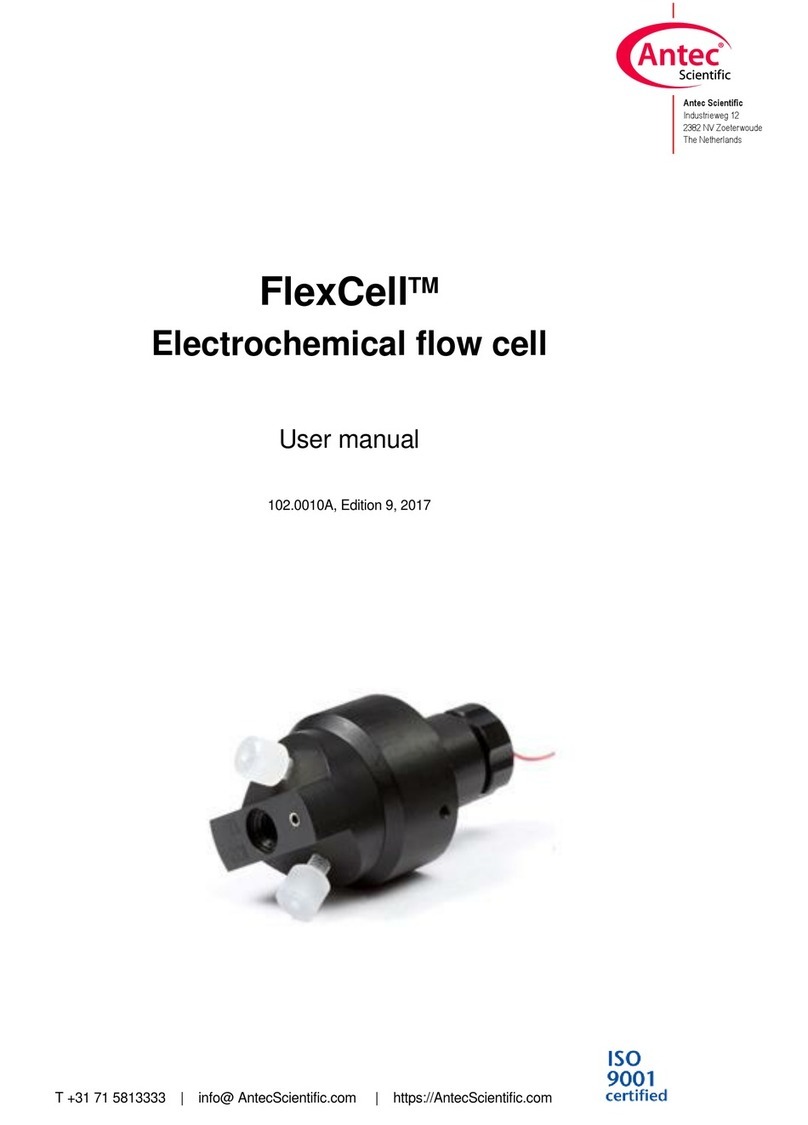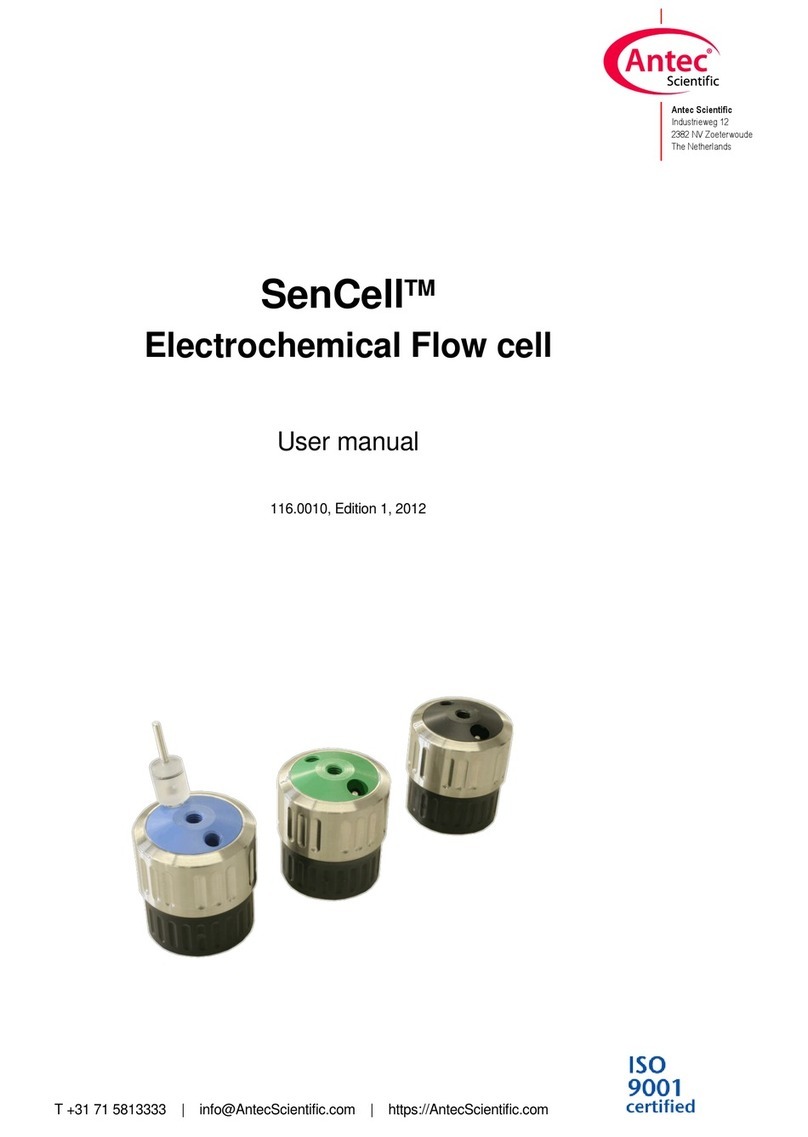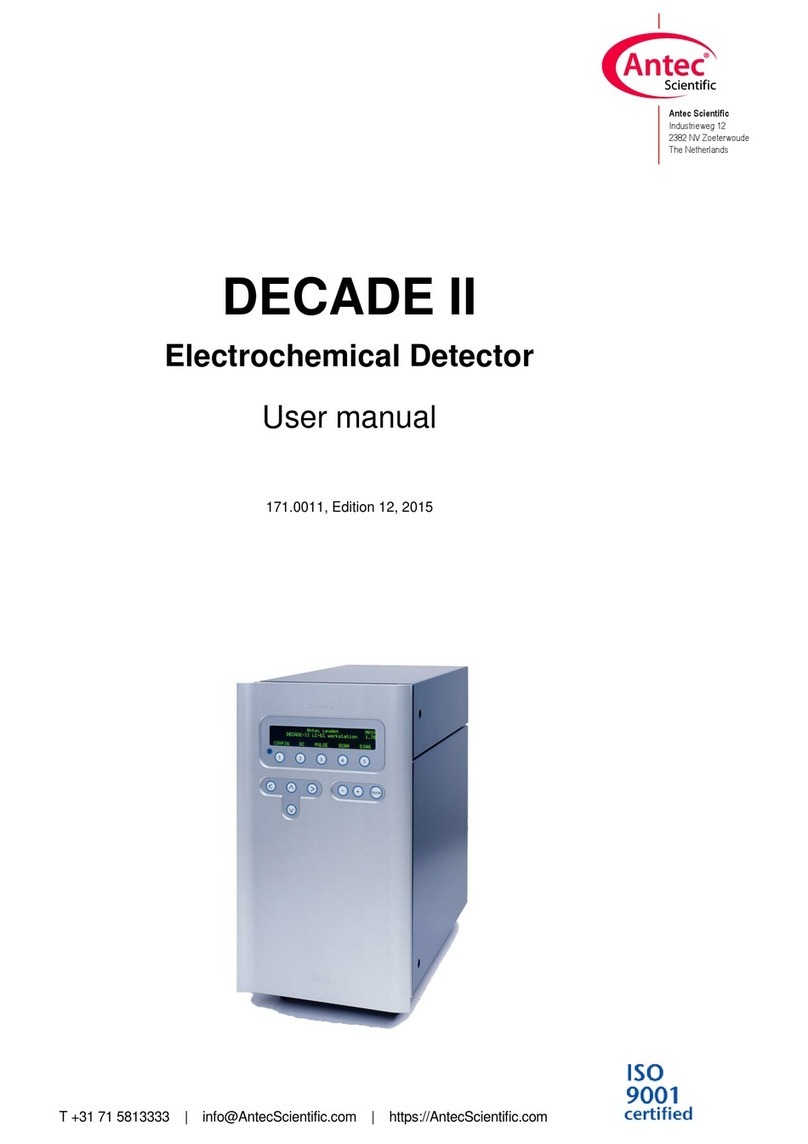6VT03 flow cell user manual, ed. 8
If the working potential would be applied only over the REF versus theWE
(without AUX), the working potential would be very well defined. However,
the potential of a REF is only well defined if the current drawn is extremely
low (pico-amperes) resulting in a very limited dynamic range.
A three-electrode configuration, combines the best of both electrodes. The
REF stabilises the working potential and the AUX can supply high currents.
This results in the tremendous dynamic range of a three-electrode system.
Working electrode
Electrochemical detection puts high demands on the WE material. The WE
should be made of a (electro-)chemically inert material. Furthermore, to avoid
an irregular flow profile over the electrode, it should have a very well defined
surface. Finally, it is important that the analyte of interest can be oxidised (or
reduced) with favourable I/E characteristics. This in factmeans that a high
signalmust be obtained at a low working potential. For most applications
glassy carbon will be the WE material of choice. Under certain circumstances
other materials are favourable.
For example, for the analysis of iodide a silver WE can be used. At the silver
WE the following oxidation reaction occurs for iodide:
Ag + I-→AgI + e-
This reaction already takes place at a very low working potential (1 mV !),
which results in an extremelyhigh selectivity. This allows the determination of
iodide in urine samples to take place almost without any sample pre-
treatment.































